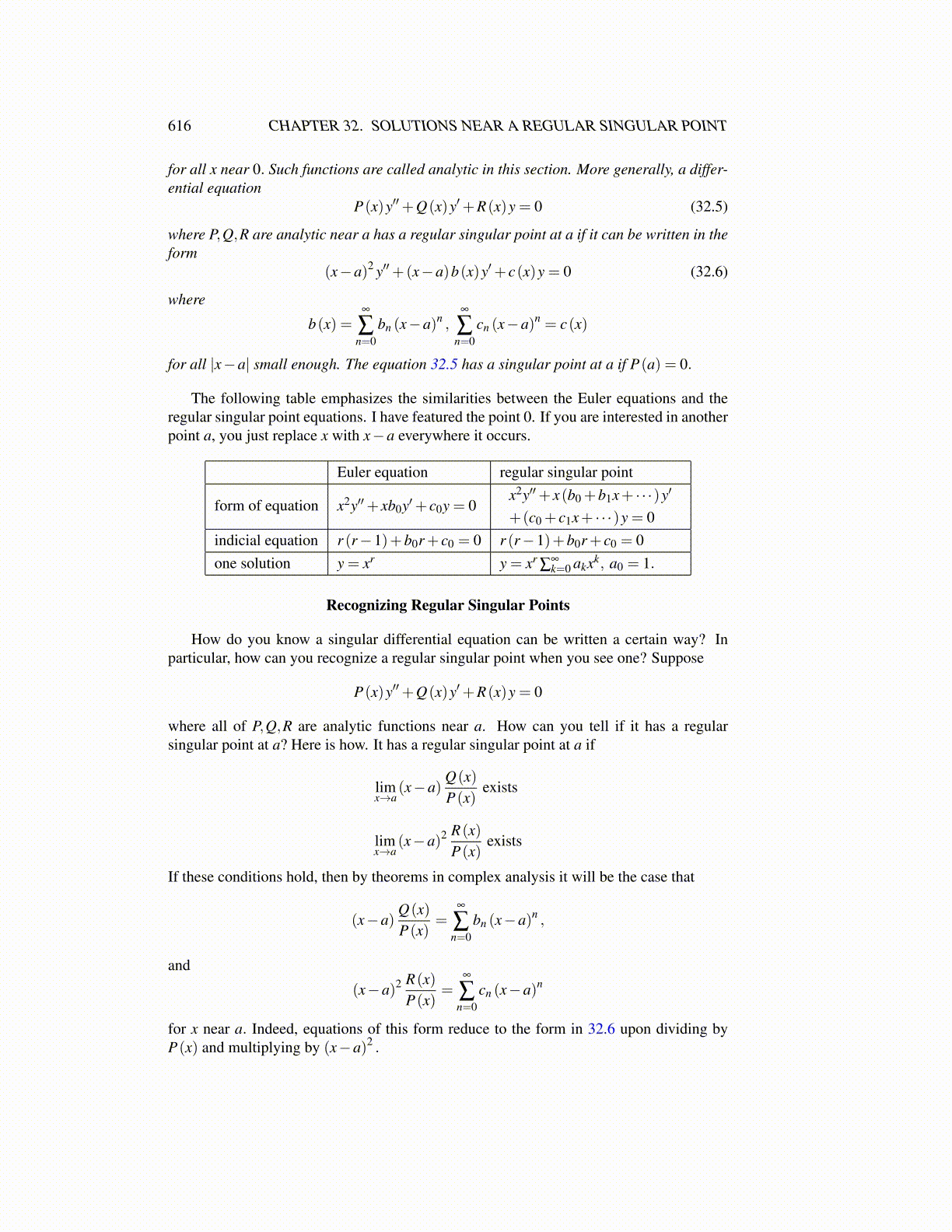
616 CHAPTER 32. SOLUTIONS NEAR A REGULAR SINGULAR POINT
for all x near 0. Such functions are called analytic in this section. More generally, a differ-ential equation
P(x)y′′+Q(x)y′+R(x)y = 0 (32.5)
where P,Q,R are analytic near a has a regular singular point at a if it can be written in theform
(x−a)2 y′′+(x−a)b(x)y′+ c(x)y = 0 (32.6)
where
b(x) =∞
∑n=0
bn (x−a)n ,∞
∑n=0
cn (x−a)n = c(x)
for all |x−a| small enough. The equation 32.5 has a singular point at a if P(a) = 0.
The following table emphasizes the similarities between the Euler equations and theregular singular point equations. I have featured the point 0. If you are interested in anotherpoint a, you just replace x with x−a everywhere it occurs.
Euler equation regular singular point
form of equation x2y′′+ xb0y′+ c0y = 0x2y′′+ x(b0 +b1x+ · · ·)y′
+(c0 + c1x+ · · ·)y = 0indicial equation r (r−1)+b0r+ c0 = 0 r (r−1)+b0r+ c0 = 0one solution y = xr y = xr
∑∞k=0 akxk, a0 = 1.
Recognizing Regular Singular Points
How do you know a singular differential equation can be written a certain way? Inparticular, how can you recognize a regular singular point when you see one? Suppose
P(x)y′′+Q(x)y′+R(x)y = 0
where all of P,Q,R are analytic functions near a. How can you tell if it has a regularsingular point at a? Here is how. It has a regular singular point at a if
limx→a
(x−a)Q(x)P(x)
exists
limx→a
(x−a)2 R(x)P(x)
exists
If these conditions hold, then by theorems in complex analysis it will be the case that
(x−a)Q(x)P(x)
=∞
∑n=0
bn (x−a)n ,
and
(x−a)2 R(x)P(x)
=∞
∑n=0
cn (x−a)n
for x near a. Indeed, equations of this form reduce to the form in 32.6 upon dividing byP(x) and multiplying by (x−a)2 .